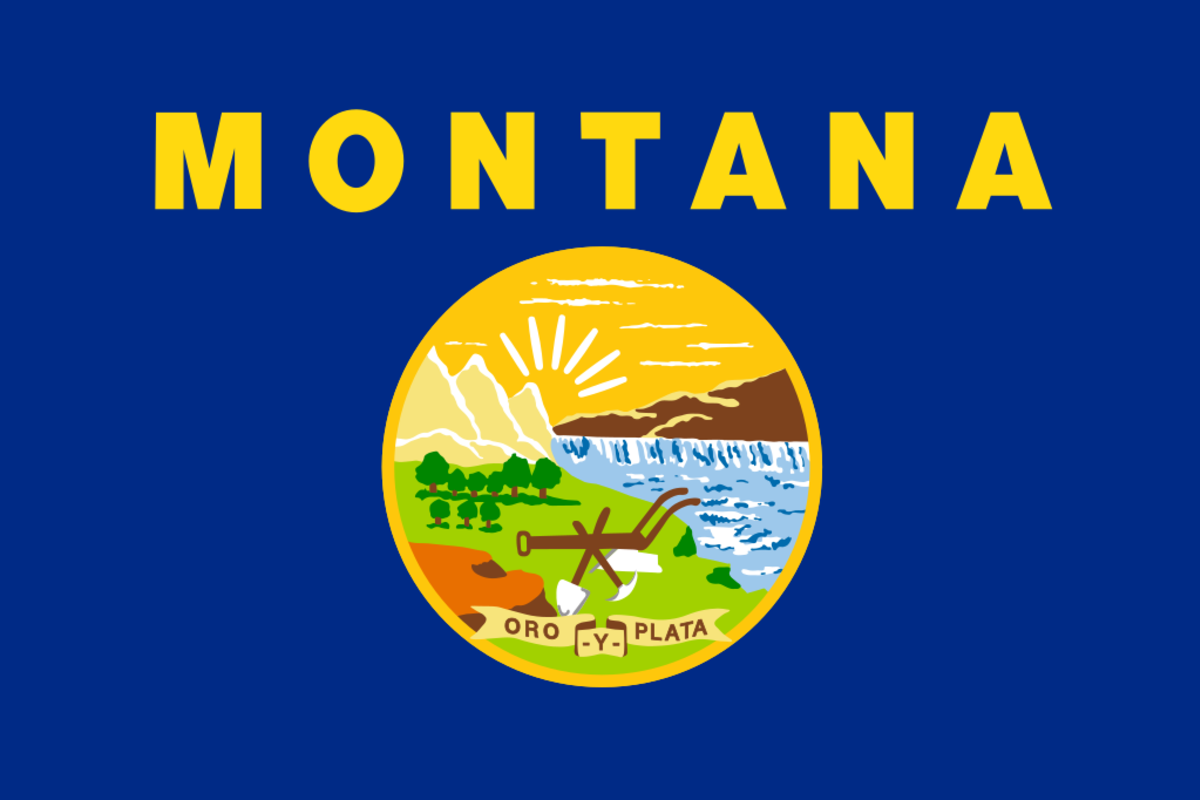The Federal Motor Carrier Safety Administration (FMCSA) recorded 816 large-truck accidents in Montana in 2021, which involved 877 vehicles, 31 fatalities, and 265 injuries. The year before that, the state had a fatality rate of 1.76 per 100 million vehicle miles traveled, which is 0.42 higher than the national average. Some of its deadliest roads for truck drivers are U.S. Highways 191 and 12, while the most dangerous section is Lolo Pass.
Montana has several laws that regulate commercial trucking and establish liability for accidents involving large trucks. These cover a range of areas, including driver qualifications, vehicle maintenance and inspection, hours of service, and insurance requirements.
Given the complexity of truck-related laws and the potential legal implications of a trucking accident, speaking with an experienced attorney who can help you navigate the legal landscape and ensure your rights are protected will be beneficial.
Montana Commercial Vehicle Size and Weight Law
The maximum size and weight of commercial vehicles in Montana are regulated to promote safety. The gross vehicle weight of commercial vehicles is 80,000 pounds, and the maximum length of a combination of vehicles is 85 feet.
Weight limits are determined by the number of axles on a vehicle, with higher limits for those with more axles. For example, a truck with a single axle is limited to 20,000 pounds, while commercial motor vehicles (CMVs) with three axles can carry up to 42,000 pounds.
Trucks with four or more axles are subject to even higher weight limits, with some allowed to carry up to 105,500 pounds in certain circumstances based on overweight permit requirements.
The Montana Department of Transportation (MDT) conducts regular inspections of CMVs to ensure they are complying with the law.
Montana Commercial Driver’s Licenses
Montana's commercial driver’s licenses (CDLs) are required for individuals who operate CMVs, which are defined as vehicles with a gross vehicle weight rating (GVWR) of 26,001 pounds or more, vehicles designed to transport 16 or more passengers (including the driver), or any vehicle that transports hazardous materials in certain quantities.
A CDL in Montana can be obtained through a series of knowledge and skills tests, including a written exam on driving regulations and safety, as well as a road skills test. Applicants must also meet certain eligibility requirements, such as being at least 18 years of age for intrastate driving or 21 years of age for interstate driving.
There are three classes of CDLs:
Class A: Required for combination vehicles with a gross combined weight rating (GCWR) of 26,001 pounds or more, provided the vehicle being towed has a GVWR of 10,001 pounds or more.
Class B: Required for single vehicles with a GVWR of 26,001 pounds or more or a combination of vehicles with a GCWR of 26,001 pounds or more, provided the vehicle being towed has a GVWR of less than 10,001 pounds.
Class C: Required for single vehicles with a GVWR of less than 26,001 pounds and for vehicles that are designed to transport 16 or more passengers (including the driver) or hazardous materials.
There are other endorsements that can be added to a CDL to authorize a driver to operate specific types of vehicles or transport certain types of cargo. These include H for hazardous materials, N for tank vehicles, P for passenger vehicles, S for school buses, T for double or triple trailers, and X for vehicles transporting hazardous materials in a tank vehicle.
If one is caught driving a truck without the proper CDL, they could face fines of up to $1,000.
Montana Seasonal CDL Law
Montana offers a seasonal commercial driver’s license (SCDL) for drivers who work in industries that require them to operate CMVs only during certain times of the year, such as agriculture, construction, or logging.
An SCDL is valid for 180 days and can only be obtained once per calendar year. To be eligible for an SCDL, one must meet the same requirements as a regular CDL. However, an SCDL does not require drivers to obtain endorsements for specialized vehicles or cargo unless they will be operating vehicles that require a hazardous materials endorsement.
Truck drivers who hold an SCDL are subject to the same driving restrictions and limitations as individuals with a regular CDL. It is important to note that while an SCDL allows drivers to operate CMVs during the designated season, they must have a regular CDL to drive a CMV outside of that season.
Montana Hours of Service Laws
Montana commercial truck drivers are subject to federal hours of service regulations, which limit the time they can spend behind the wheel before taking a break. Drivers are limited to driving for 11 hours after 10 consecutive hours off duty and 14 consecutive hours on duty, including driving time and other work activities.
Additionally, drivers are required to follow a 60/70-hour on-duty restriction, beyond which they are not permitted to operate a motor vehicle for 7/8 consecutive days.
Drivers must take a 30-minute break after 8 consecutive hours of driving time and keep correct records of their hours of service. Law enforcement personnel should be permitted to view the documents.
Violating hours of service regulations can result in penalties for a driver or carrier, which range from $1,000 to $11,000 in fines based on the severity of the violation.
Trucking companies and drivers should comply with these rules to ensure the safety of all motorists on the state's roadways. Carriers who have knowingly allowed or required violations may face federal criminal penalties.
Montana Drunk Driving Laws for Truck Drivers
Montana has strict laws prohibiting drunk driving for all motorists, including commercial truck drivers. The legal blood alcohol content (BAC) limit for commercial drivers is 0.04%.
If a commercial truck driver is found to have a BAC above this limit, they can face criminal charges and have their CDL suspended or revoked. In addition, the trucking company that employs the driver can be subject to civil or criminal penalties.
Montana also has an implied consent law, which means that by accepting a driver's license, drivers are giving their consent to submit to a chemical test at the request of a law enforcement official. Refusal to do so can result in the automatic suspension of their driver's license.
For a first offense, a commercial truck driver can face a fine of up to $1,000, up to six months in jail, and the suspension or revocation of their CDL. A second offense can result in fines of up to $2,000, up to one year in jail, and permanent CDL revocation. Meanwhile, subsequent offenses can result in fines of up to $10,000, up to five years in jail, and permanent CDL revocation.
Montana Speeding Law for Truck Drivers
Montana has strict speed limits for commercial trucks, which are subject to lower speed limits than passenger vehicles due to their size and weight.
Their maximum speed limit is 70 mph on interstate highways and 65 mph on other highways. Truck drivers should obey these to ensure their own and other road users’ safety.
Violations of this law can result in fines ranging from $70 to $200, depending on their severity. If a driver is caught exceeding the speed limit by more than 10 mph, they may face a $70 fine, while a driver caught driving over 30 mph over the posted speed limit may face a $200 fine.
Montana Commercial Trucking Insurance Requirements
Montana law requires all commercial trucking companies to maintain a minimum liability insurance coverage based on the type of cargo being transported and the weight of the CMV.
The minimum liability insurance for vehicles weighing less than 10,000 pounds is $25,000 per person and $50,000 per accident for bodily injury, as well as $20,000 per accident for property damage.
The additional minimum insurance requirements for passenger vehicles are:
$100,000 combined single limit (CSL) for vehicles that carry one to seven people.
$500,000 CSL for vehicles that carry eight to 15 people.
$750,000 CSL for vehicles that carry 16 to 26 people.
For CMVs transporting non-hazardous materials, the requirement is $100,000 CSL for vehicles under 10,000 pounds and $500,000 CSL for those weighing 10,000 pounds or more.
Commercial trucking companies need to purchase other types of insurance policies depending on the nature of their operations. For example, trucks transporting non-hazardous materials must maintain a minimum of $750,000 in liability insurance. In contrast, those carrying hazardous materials must have a minimum of $1 million in liability insurance for non-rail transportation and $5 million for rail transportation. The insurance must cover bodily injury or death to one or more people and property damage resulting from a single incident.
How Much Can Someone Sue for a Truck Accident in Montana?
Montana does not have a cap on damages for truck accident lawsuits, and injured victims can sue for any amount of compensation they believe they are entitled to. The plaintiff may claim economic damages, such as medical expenses, lost wages, and property damage, as well as non-economic damages like pain and suffering, emotional distress, and loss of enjoyment of life.
However, it is important to note that there is a cap on punitive damages; the amount must be 3% of the defendant’s net worth or less than $10 million, whichever is lower.
The amount of damages awarded in a truck accident lawsuit depends on various factors, including the impact of the incident on the victim's life and the amount of insurance coverage available.
If you have been involved in a trucking accident, it is important to ask for legal assistance in navigating your lawsuit to understand your rights and potential compensation based on the specific circumstances involved.
Montana Statute of Limitations for Truck Accidents
The statute of limitations for filing a truck accident lawsuit in Montana is three years from the date of the accident. Additionally, claims for personal property damage must be brought within two years of the event.
There are also certain circumstances where the statute of limitations can be extended or shortened, if the truck accident involves wrongful death, the statute of limitations may be extended up to 10 years.
If a victim’s lawsuit is not filed within the time limit, they may be barred from seeking compensation for injuries or damages. Therefore, it is crucial for those involved in a truck accident to act quickly and seek legal assistance right away to ensure that their rights are protected.
Montana Is a Fault State for Insurance Claims
Montana is considered a fault state for insurance claims, where the party who is determined to be at fault for the truck accident is responsible for paying for the resulting damages and injuries up to the limits of their policy. If the damages exceed the policy limits, the at-fault party will be responsible for paying the difference out of pocket.
Truck accident victims also have the option to file a claim with their own insurance companies, which in turn can pursue reimbursement from the at-fault party’s insurance provider. If negotiations fail, the victims can go to court and file a personal injury lawsuit against the at-fault party.
Montana Is a Modified Comparative Negligence State for Trucking Accident Lawsuits
Montana is a modified comparative negligence state, which means in the event of a truck accident, the damages and injuries are apportioned among the parties based on their degree of fault.
It follows the 51% bar rule, where a person who is injured in an accident can recover damages only if they are less than 51% to blame. If the injured person is found to be 51% or more at fault for the accident, they may not recover any damages. Additionally, if the injured person is found to be less than 51% responsible, their damages will be reduced in proportion to their degree of fault.
Average Settlement for Montana Trucking Accident Lawsuits
Determining the average settlement for Montana trucking accident lawsuits can be difficult because the amount of a settlement or jury award can vary widely depending on the specifics of a case.
As a modified comparative negligence state, Montana allows for damages to be reduced in proportion to the degree of fault of each party, and this also affects the total damages that can be awarded to a plaintiff.
For example, if an individual involved in a trucking accident faces $125,000 in medical expenses and lost wages and is found to be 20% at fault for the accident, their damages will be reduced by 20% to $100,000. If the at-fault party's insurance policy has a limit of $100,000, the injured party may be able to recover the full amount of their damages up to the policy limit.
A skilled attorney can help you understand the potential for compensation in your case and work to secure the best possible outcome for your situation. Attorneys in Montana usually work on a contingency fee basis, collecting 25% to 50% of the settlement amount. If you are considering hiring an attorney, discussing their fee structure and any other costs associated with your case upfront is important.
Legal Resources for Truck Accident Victims
State Bar of Montana Modest Means Program
The Montana Modest Means Program is a statewide initiative that aims to provide legal assistance to low-income truck accident victims who would otherwise be unable to afford legal representation. It operates through a network of volunteer attorneys and legal professionals who provide pro bono services to eligible clients. It assists them in navigating the complex legal system, helping them understand their rights, and advocating for them in court.
Montana Commissioner of Securities and Insurance
The Montana Commissioner of Securities and Insurance oversees the insurance industry in the state. It is responsible for licensing and regulating insurance companies and agents operating in Montana, ensuring that they comply with laws and provide fair and competitive insurance products. It also assists consumers experiencing issues with their insurance providers or having ongoing disputes with their insurance company or agent. Individuals can file a complaint, and the office will investigate the matter and work to resolve their concerns.
Montana Truckers Handbook
The Montana Truckers Handbook is a comprehensive guide by the MDT that provides commercial truck drivers with the information they need to operate their vehicles safely and legally on Montana's roadways. It covers topics like driver qualifications, vehicle maintenance, hours of service regulations, and insurance requirements.
Montana CDL Handbook
The Montana CDL Handbook is a comprehensive guide for commercial truck drivers. It is produced by the MDT and covers a variety of topics, including safe driving, vehicle inspection, and hazardous material transportation.
Montana Traveler Information Site
The Montana Traveler Information site by the MDT offers real-time information on road conditions and construction projects in the state. Residents and tourists can access real-time traffic cameras, travel alerts, and weather details for all major highways and roadways. The site also has maps and travel guides.
Montana Motor Carrier Safety Assistance Program
The FMCSA’s Motor Carrier Safety Assistance Program (MCSAP) provides funding to states to reduce CMV crashes, injuries, and fatalities. In Montana, the MCSAP is administered by the MDT. Its plan includes conducting roadside CMV inspections, promoting compliance with federal and state regulations through education and outreach efforts, and handling investigations into carriers and drivers with a history of noncompliance.
Step into the world of Expertise.com, your go-to hub for credible insights. We don't take accuracy lightly around here. Our squad of expert reviewers, each a maestro in their field, has given the green light to every single article you'll find. From rigorous fact-checking to meticulous evaluations of service providers, we've got it all covered. So feel free to dive in and explore. The information you'll uncover has been stamped with the seal of approval by our top-notch experts.





